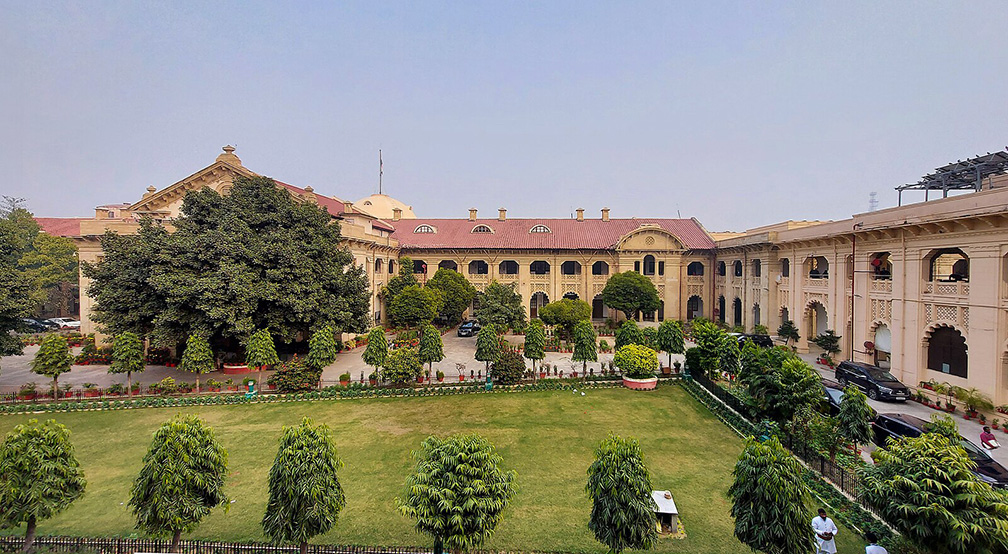
The recent alarm raised by the Allahabad High Court over the surge in religious conversions is a critical issue that demands our attention. The court’s concern that India’s majority population could one day become a minority if such practices go unchecked is not only a legal matter but also a cultural and socio-economical one that resonates deeply with the Hindu community.
On July 1, the High Court was hearing the bail petition of Kailash, accused of taking people from Hamirpur, Uttar Pradesh, to a gathering in Delhi for religious conversion. According to the FIR, individuals, including Ramphal, who was mentally ill, were lured with promises of treatment and taken to Delhi, only to never return. The FIR also alleges that many people from Hamirpur were converted to Christianity during these gatherings.
This situation brings to light the vulnerability of economically and socially disadvantaged groups to coercion and deceit under the guise of religious gatherings. The Uttar Pradesh government’s counsel, Additional Advocate General PK Giri, pointed out that such conversions are happening at a significant scale, with witnesses claiming that villagers were taken for conversion in exchange for payment.
The defense argued that attending a Christian gathering does not equate to conversion, but the court’s stance was clear. Justice Rohit Ranjan Agarwal emphasized that while Article 25 of the Constitution guarantees the freedom to profess, practice, and propagate religion, it does not sanction conversion from one faith to another. Propagation, as defined, means promoting one’s religion without converting others.
The court’s decision to deny bail to Kailash and its directive to halt religious gatherings where conversions are taking place reflect a commitment to uphold the spirit of the Constitution and protect vulnerable populations from exploitation. This ruling aligns with the values of the Hindu community, which cherishes its rich cultural and spiritual heritage and seeks to preserve it for future generations.
A recent demographic report by the Prime Minister’s Economic Advisory Council further underscores the urgency of this issue. The report, titled ‘Share of Religious Minorities: A Cross-Country Analysis (1950-2015),’ highlights significant changes in India’s religious demographics. The share of the majority Hindu population decreased by 7.82 percent between 1950 and 2015, while the Muslim population increased by 43.15 percent. The share of Christians and Buddhists also saw increases, although to a lesser extent.
The socio-economic implications of these demographic changes cannot be ignored. As Arun Anand noted in his article on Sanghnomics in Moneycontrol, “the impact of changes in the religious demography on the economic policy framework in India needs to be reviewed more intently.” The political structures that determine economic policies are deeply influenced by the changing religious demography. For instance, former Prime Minister Manmohan Singh’s statement that minorities, particularly Muslims, should have the first claim on resources raised concerns about potential biases in policy-making.
One of the recent examples illustrating how policy-making can be influenced by religious demographics is the Congress party’s efforts to introduce a 5% quota for Muslims in Karnataka and Andhra Pradesh as a “pilot project” for nationwide implementation. Prime Minister Narendra Modi has criticized attempts to include Muslims in the OBC list in Karnataka, highlighting how demographic changes can lead to policy shifts that may not align with the larger good for the majority population.
The report by the Economic Advisory Council aptly points out that in democracies, demographic changes can significantly impact political outcomes. These changes affect the provisioning of public goods and the contours of elections, as politicians often attempt to leverage demographic shifts to address insecurities or represent new constituencies. As the report states, “Politics, especially in a democracy, is not an exogenous variable but quite often an attempt to leverage these changes by projecting a solution to the insecurities generated by changing demographics or vouching to become a representative of the new demography.”
Religious conversion, especially when achieved through coercion or deceit, undermines the social fabric and cultural integrity of our nation. It is crucial to recognize that India’s diversity is its strength, and this diversity includes the preservation of its majority Hindu population. The fears expressed by the court are not unfounded; if the current trends continue, there could be significant demographic shifts that might destabilize the cultural equilibrium of the country.
Moreover, this issue is not just about numbers; it’s about the right of every individual to follow their faith without pressure or manipulation. The Hindu community must stand united in supporting measures that protect this right and ensure that conversions, if they happen, are a result of genuine personal belief and not external inducements.
In conclusion, the Allahabad High Court’s intervention is a necessary step towards preserving India’s cultural and religious identity. It is a call to action for all of us to remain vigilant and proactive in safeguarding our traditions and values. The Hindu community, in particular, must continue to support legal and social frameworks that protect the freedom of belief while preventing exploitative practices. This will ensure that our cultural heritage remains robust and resilient in the face of such challenges.